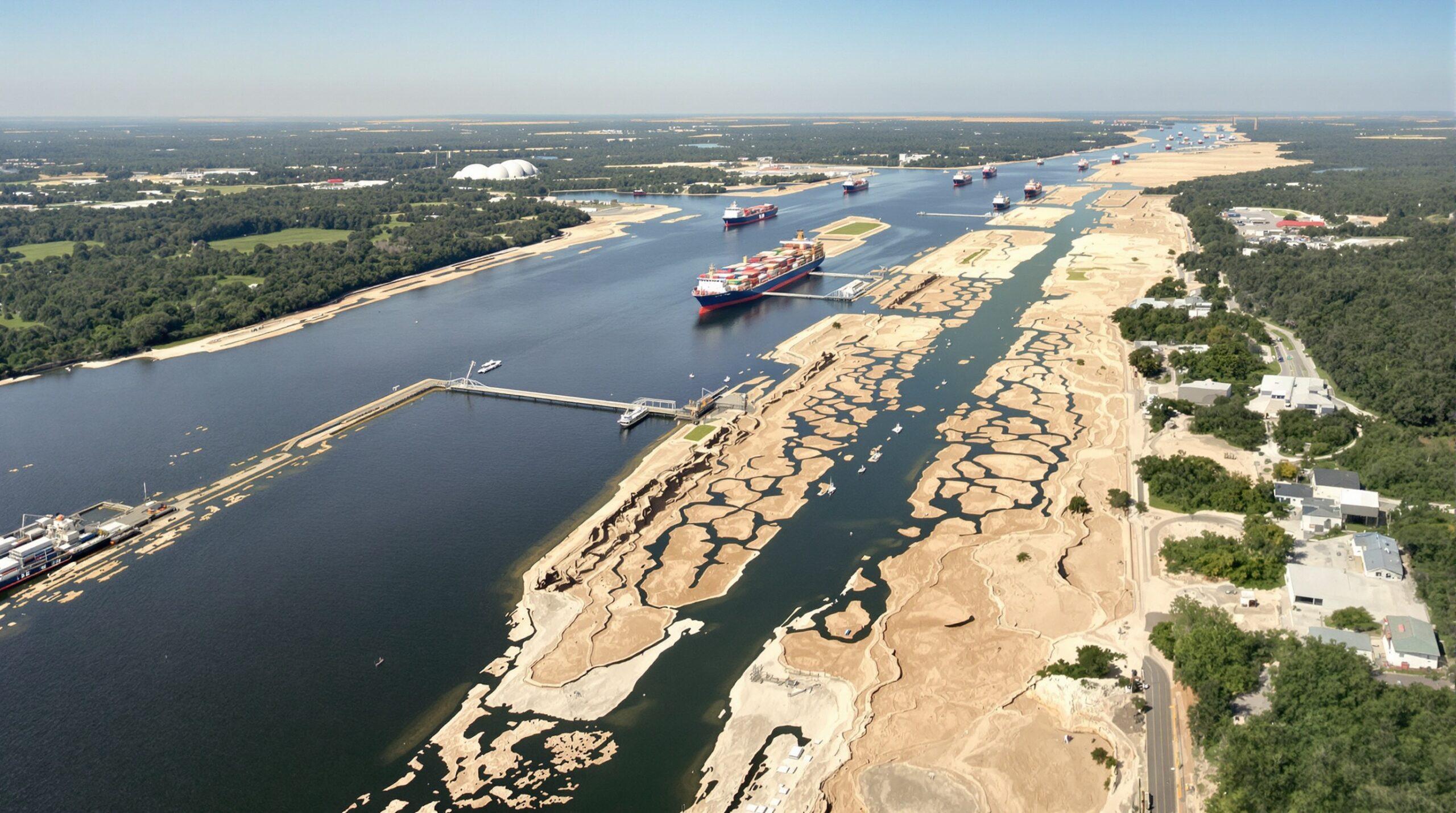The Panama Canal, one of the world’s busiest maritime shortcuts, is experiencing an unprecedented drought. This severe weather event has forced authorities to reduce transit slots for large vessels. The canal’s limitations are sparking significant changes in global shipping patterns, impacting trade, shipping costs, and logistics worldwide.
Record Low Water Levels Challenge Operations
Lake Gatun, the artificial lake at the canal’s center, plays a crucial role in its operation. For months, rainfall in the region has been less than half the historic average. Lower lake levels mean less water is available to fill the locks that raise and lower ships during their transit.
Water shortages directly determine the canal’s ability to handle vessel traffic. Normally, the canal allows around 36 ships to transit daily. Due to water scarcity, officials have slashed this number to as few as 18 slots on some days. These measures try to conserve precious freshwater reserves as the drought persists.
Transit Restrictions and Economic Ripple Effects
The reduced number of slots has immediate consequences for international trade. Ships now face long wait times to secure passage. Many operators book passage weeks or even months in advance, and some vessels are forced to detour entirely.
With fewer available transits, the cost of passage has surged. The canal authority regularly runs auctions for prime slots. In early 2024, one slot fetched more than $2 million, a record high. These escalating fees further squeeze shipping margins, adding to the difficulties faced by exporters and importers worldwide.
Impact on Shipping Schedules and Trade Flows
Larger container ships face the brunt of these restrictions. Bulk carriers and liquefied natural gas (LNG) vessels often switch to alternative routes when slots prove elusive. Lines with lower-value or less urgent cargo may choose to re-route around South America’s Cape Horn, a much lengthier and costlier journey.
Other vessels wait at anchor outside the canal for extended periods, incurring demurrage charges and riskier scheduling. This backlog disrupts predictable supply chains and erodes reliability for global manufacturers and retailers.
Alternative Routes Become More Attractive
Shipping companies are rapidly evaluating their options as Panama Canal bottlenecks increase. The Suez Canal, for east-west trade, has become an even more important option, although it too faces periodic congestion and regional instability.
Some shippers are considering the longer route around Africa’s Cape of Good Hope. While significantly increasing distance and fuel costs, this route offers reliability when Panama Canal delays mount. Trans-Arctic routes are rarely viable, but climate change may change this in the future.
Regional Ports See Growing Demand
As ships bypass the canal, ports along the east and west coasts of the Americas adapt to new demand. U.S. Gulf and East Coast ports handle more container traffic, especially for Asian imports. Latin American ports are also experiencing increased calls from ships choosing to avoid canal delays.
This shifting demand puts new pressure on terminal infrastructure, customs procedures, and inland logistics networks. Investment in port facilities and rail links is likely as shipping patterns adjust to new realities.
Environmental and Global Trade Implications
The drought’s effects extend beyond economic disruptions. Stricter slot allocation emphasizes the vulnerability of critical infrastructure to climate variability. Continued water shortages raise questions about the canal’s long-term sustainability as global temperatures rise and rainfall becomes less predictable.
Longer shipping routes contribute to higher carbon emissions from global trade. Even a slight increase in the average distance traveled by container ships translates into more fuel burned. This could complicate efforts by the shipping industry to reduce its environmental impact in alignment with international climate goals.
Calls for Infrastructure Upgrades and Water Management Reforms
Canal authorities face mounting pressure to adapt their infrastructure and operating model to a drier climate. Projects to develop new reservoirs and improve water-saving lock technology are underway, but these are long-term solutions. In the immediate term, strict water conservation measures remain essential.
Experts also call for integrated watershed management in Panama, including work to restore upstream forests and reduce agricultural water use. These measures could help stabilize Lake Gatun’s levels in the face of future droughts.
Global Supply Chain Resilience Faces a Test
The disruption in Panama is a new test for the agility of global supply chains. Recent years have already seen major shocks, from pandemic lockdowns to geopolitical tensions. Now, unreliable canal access adds complexity for businesses that rely on just-in-time delivery and tight inventory controls.
Shipping companies, freight forwarders, and cargo owners are recalibrating their risk models. More firms hedge against bottlenecks by diversifying shipping routes, increasing buffer stock, or using alternative modes of transport like air cargo for high-value goods. These changes may lead to higher prices and longer lead times for many industries.
The Path Forward: Adaptation and Collaboration
The Panama Canal’s drought-induced restrictions underscore how environmental factors shape the future of international trade. Stakeholders, from canal administrators to global shippers, must coordinate to develop both short-term and long-term solutions.
Investments in canal infrastructure and better water management could help restore the canal’s reliability. Meanwhile, businesses must remain flexible as uncertainty persists about the canal’s water supply. International collaboration, regional planning, and data-driven forecasts are essential to keep global trade moving efficiently despite extreme weather challenges.
As the world’s climate continues to change, the Panama Canal’s situation offers a lesson in the necessity of resilience and innovation. By adapting shipping strategies and modernizing infrastructure, global trade can navigate the unpredictable conditions that now face even its most crucial passages.

